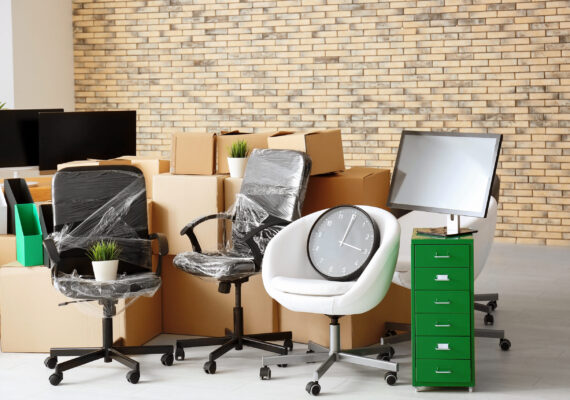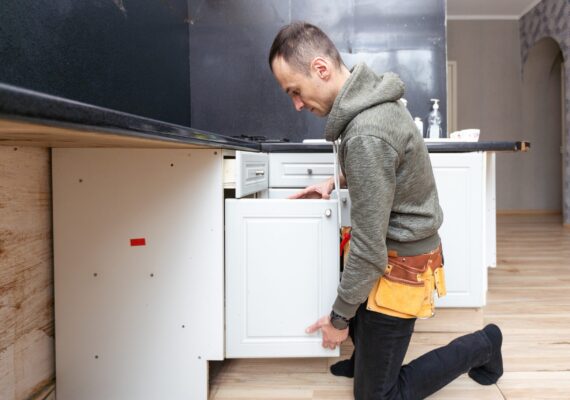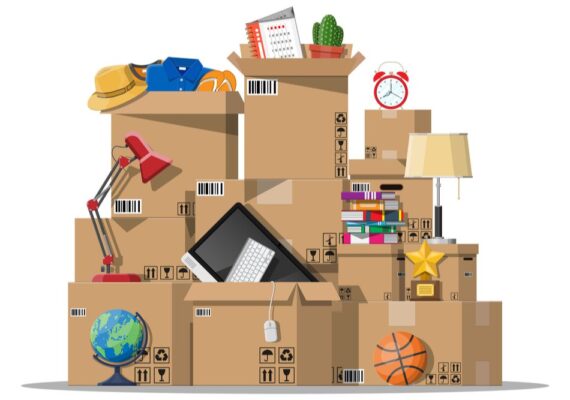Why Floor Plans Are the Secret Weapon for Stress-Free Moving
Have you ever watched a movie scene where someone moves into a new home, and everything fits perfectly, each chair slides right under the table, every painting finds its ideal wall, and the living room instantly feels cozy? Pretty unrealistic, right? If only real life could be that smooth. Instead, many of us face the chaos of a move, with sofas stuck in hallways, boxes cluttering unexpected corners, and the stress of trying to make a new space feel like home under a ticking clock. But what if you could unlock a secret weapon that makes your move flow almost effortlessly?
That secret weapon is a well-thought-out floor plan.
Before the first box is packed or the moving truck arrives, having a clear blueprint for where everything goes not only saves time but also protects your budget and your sanity. It turns a potentially overwhelming ordeal into a strategic, even enjoyable, process. In this post, we’ll dive into why floor plans matter more than you think, how they can save you money, and practical tips on creating one that works for you.
The Overlooked Power of Pre-Planning Your Move
When people think about moving, the focus often lands on packing, loading trucks, or booking moving services. These tasks are important, but they only cover part of the picture. What often gets overlooked is the “what next?” question: What happens when you arrive at your new place?
Imagine this scenario: You’ve hired movers in Downingtown, and everything arrives on schedule. Boxes are stacked high, your bed frame is leaning against the wall, but there’s no clear plan for setting it up. Hours turn into days as you figure out where each piece should go. The couch that seemed perfect in the old place now feels oversized and awkward. That frustration adds unnecessary time and costs.
A thoughtfully created floor plan prevents this scenario by serving as a roadmap. It shows exactly where every piece of furniture will go before anything is moved. This clarity:
- Reduces guesswork and delays
- Limits heavy lifting and rearranging once moved in
- Makes the move more efficient for both you and the moving team
In short, floor plans are the unsung heroes that bring order to the chaos of relocation.
How Floor Plans Save You Time
Time is one of your most valuable resources during a move. A well-prepared floor plan speeds up the process in several ways:
Efficient Packing and Unpacking
When you know where everything will end up, you can label boxes according to the rooms they belong in. This means movers won’t waste time carrying boxes into the wrong rooms, and you won’t waste time sorting them later.
Faster Furniture Placement
Movers can position furniture correctly on the first try. This avoids the common back-and-forth of moving a couch into a room only to realize it blocks a door or doesn’t fit under a window.
Clearer Communication
Sharing the floor plan with everyone involved, the movers, family members, or contractors, keeps everyone on the same page. There’s less confusion and fewer questions mid-move.
Avoids Multiple Trips
Without a plan, you might find yourself moving items multiple times within the new home. Each unnecessary trip adds hours to your moving day.
By investing a little time in drawing or digitally creating a floor plan before your move, you end up saving countless hours during and after moving day.
How Floor Plans Save You Money
Beyond saving time, a floor plan can also help you save money, sometimes in significant amounts. Here’s how:
- Minimized Labor Costs: Movers typically charge by the hour. The faster they complete the job, the less you pay. A clear floor plan prevents delays and repeated lifting, reducing labor costs.
- Reduced Damage to Furniture and Walls: Trying to force a sofa through a narrow doorway or maneuvering furniture without a plan can cause scratches, dents, or worse. Damage means repair or replacement costs, which you avoid with proper planning.
- Avoiding Storage Fees: If items don’t fit as expected, you might have to store some belongings temporarily. That’s an extra monthly cost that could be avoided by visualizing your space ahead of time.
- Less Need for New Furniture: If you understand your space well, you can make better decisions about what furniture to bring, sell, or buy. This avoids unnecessary purchases or last-minute rentals.
In sum, floor plans protect your wallet by preventing costly surprises.
Planning for Storage and Decluttering Before the Move
Moving is the perfect time to reassess what you actually need and what you can part with, but it can be hard to stay organized without a clear storage plan. A detailed floor plan can highlight existing storage spaces and help you decide what storage solutions you may need after the move.
Are there closets, built-in shelves, or attic space you can utilize? Will you need freestanding wardrobes or extra shelving units? Planning for these needs ahead of time allows you to strategically pack and label boxes, focusing on decluttering before you move. It also helps prevent the all-too-common problem of ending up with “stuff” that has no designated place in the new home, which leads to clutter and stress.
By visualizing storage options on your floor plan, you’re also better prepared to communicate your needs to your moving or unpacking team, ensuring that bulky storage items are handled properly and placed where they belong.
What Makes a Good Floor Plan?
Not all floor plans are created equal. A useful plan for your move should be:
- Accurate: Measure rooms carefully, including doorways, windows, and closets. Furniture dimensions are equally important.
- Detailed but Clear: Include essential items and features without overcrowding the plan.
- Flexible: Consider how spaces might serve multiple functions, especially in smaller homes or apartments.
- Easy to Share: Use formats that can be printed or shared digitally with your moving team.
How to Create Your Floor Plan: Step-by-Step
You don’t need to be an architect to make an effective floor plan. Here’s a simple guide:
- Measure Your New Space: Grab a tape measure and record room dimensions: length, width, and ceiling height. Don’t forget doorways, windows, and any built-ins.
- List Your Furniture and Major Items: Write down sizes for beds, sofas, tables, and storage units. Be honest about the dimensions, as some sofas may look smaller than they are.
- Sketch the Layout: On graph paper or with a digital tool (like Roomstyler, SketchUp, or MagicPlan), draw your rooms and plot your furniture. Start with large pieces, then fill in smaller items.
- Consider Traffic Flow: Make sure paths between furniture allow easy movement. Avoid blocking doors, windows, or heating vents.
- Label Each Area: Mark rooms and note special features like power outlets or TV hookups that influence furniture placement.
- Share and Refine: Show your plan to your moving company or family. Their feedback can highlight potential issues you missed.
Incorporating Lifestyle Needs into Your Floor Plan
Finding a floor plan that works in tandem with the way you live is invaluable. When creating your layout, it’s important to consider your daily routines and lifestyle habits to make sure your new home functions for you, not just looks good on paper.
For example, if you love cooking and entertain often, positioning your dining area close to the kitchen and creating easy traffic flow between these spaces can save you time and effort during gatherings. If you work from home, dedicating a quiet corner with natural light for your office setup becomes essential. Similarly, families with children might prioritize play areas visible from the kitchen or living room, allowing for easy supervision.
Taking these lifestyle factors into account during the planning phase ensures that your floor plan supports comfort, productivity, and enjoyment right from the start. This foresight helps prevent costly or frustrating adjustments after you’ve settled in and helps your new house truly feel like home.
Floor Plan Tools and Apps That Make Moving Easier
Technology can simplify this process. Here are some popular tools:
| Tool Name | Features | Best For | Cost |
| Roomstyler | Drag-and-drop furniture, 3D views | Beginners & visualization | Free |
| MagicPlan | Create floor plans via photos | Quick measurements & layout | Freemium (paid options) |
| SketchUp | Advanced 3D modeling | Professional-level planning | Free & Paid versions |
| Planner 5D | Interactive room design | Detailed interior design | Freemium |
These tools make it easier to visualize your new home before moving in, giving you confidence in your layout choices.
Communicating Your Floor Plan with Your Moving Team
Sharing your floor plan with a professional moving company on the Main Line and beyond like Hughes Relocation Services is crucial. They rely on clear directions to:
- Prepare the right equipment and crew size
- Plan the best routes to navigate tight spaces
- Ensure quick, damage-free placement
The more they know ahead of time, the more efficient and stress-free your move will be.
Addressing Common Moving Challenges with Floor Plans
Some challenges that floor plans help solve include:
- Odd-Shaped Rooms: Planning allows creative placement that maximizes space without wasted corners.
- Multiple Uses in One Room: A guest room that doubles as a home office needs thoughtful layout to accommodate both.
- Furniture That Doesn’t Fit: Early measurement saves you from buying new or paying to store items.
- Accessibility Needs: Floor plans ensure pathways meet accessibility requirements, avoiding surprises.
How Floor Plans Can Help with Post-Move Setup
The benefit of floor plans doesn’t stop on moving day. Once in your new home, your plan serves as a checklist for:
- Unpacking boxes by room
- Arranging decor and accessories
- Planning electrical and lighting setups
- Visualizing future changes or upgrades
This makes settling in more efficient and less overwhelming.
Collaborating with Interior Designers or Space Planners
If your move involves a major change in space size or style, collaborating with a professional interior designer or space planner can take your floor plan to the next level. These experts bring a trained eye for optimizing layouts, selecting furniture that fits your aesthetic and functional needs, and even advising on lighting and color schemes that complement your space.
Working with a professional can help you avoid common design pitfalls, such as overcrowding rooms or underutilizing valuable square footage. Many interior designers also have access to advanced software that creates precise 3D renderings of your floor plan, letting you “walk through” your new space virtually before the move.
Even if you’re moving into a smaller or simpler home, consulting with a professional can provide fresh ideas and confidence in your layout decisions. Hughes Relocation Services can assist in coordinating these consultations as part of your move.
Wrapping It Up: Why Floor Plans Are Your Moving MVP
Moving is a major life event with plenty of moving parts. While packing and transport are important, what often determines the difference between a stressful ordeal and a smooth transition is the preparation that happens before the truck arrives.
Floor plans are the secret weapon that puts you in control of your new space. They save you time, protect your belongings, reduce costs, and set you up for a happier home right from day one.
When you partner with Hughes Relocation Services, we not only help move your belongings but work with you to make sure those belongings find their perfect place in your new home. Together, with a solid floor plan, your move can be as stress-free and seamless as you deserve.Ready to move smarter? Reach out to the crew that puts your needs at the forefront: Hughes Relocation Services. Start your next chapter with confidence.













